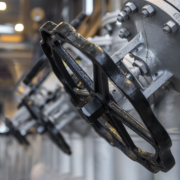FAQ – Oxidation in thermal oil systems
Oxidation in thermal oil systems – how to proceed best?
In this FAQ area, you will find some general questions and answers on and around the topic of oxidation of thermal oil system, which effects it has and how you can protect your thermal oil system.
Why is blanketing with nitrogen reasonable in a thermal oil system?
Mainly in old systems, expansion tanks and collecting tanks are open to the atmosphere. Therefore, these tanks are filled with air. Depending on the temperature in the expansion tank, oxygen included in the air can react with the thermal oil. This oxidation of the thermal oil causes sludge and tarry products that can pollute and clog the whole system.
If now nitrogen blanketing is integrated in the thermal oil system, the air in the tank is replaced by nitrogen. Then, oxidation cannot take place anymore.
Additionally, due to inertisation in the expansion tank it is not possible anymore to form an explosive atmosphere caused by escaping light ends. In the collecting tank however, condensate does not arise anymore because there is no humid air.
Back to Index
When is nitrogen blanketing reasonable?
Generally, nitrogen blanketing only provides advantages mainly in terms of system care and keeping of high oil quality. The larger the system is and with this, the included oil quantity, the more urgent the use of nitrogen blanketing is required. However, also for small-size systems nitrogen blanketing is always reasonable to protect the connected equipment from pollution.
Back to Index
How is nitrogen blanketing integrated in the system?
A safety valve must be retrofitted that is mostly installed on the outlet of the collecting tank.
Nitrogen blanketing also comes with pressure blanketing of the heat transfer oil system. The blanketing pressure must be adjusted to the system. Especially, it may not exceed the permitted pressures in the system parts.
Back to Index
Other FAQ topics that might interest you
NESS NBS
Nitrogen blanketing for thermal oil systems











